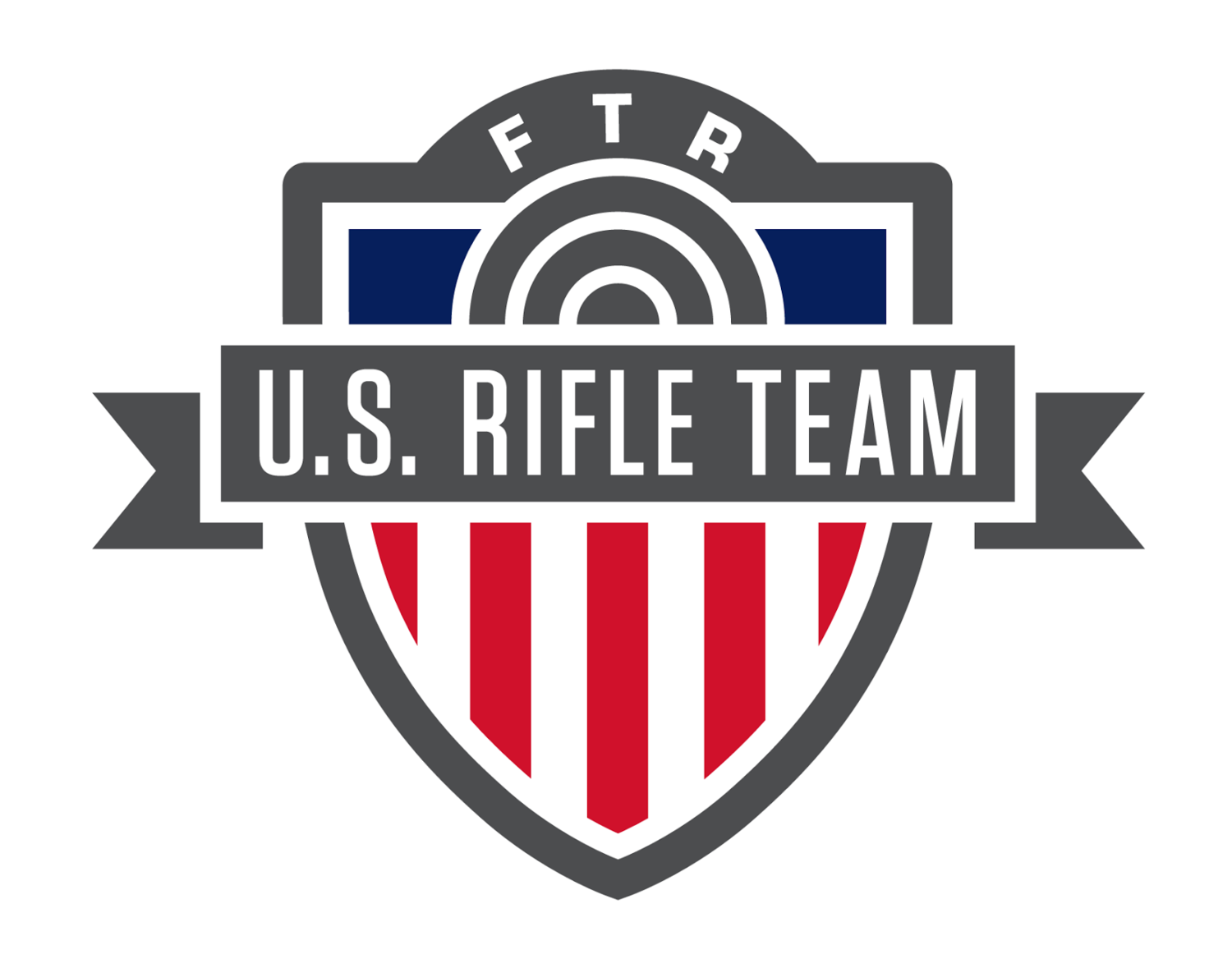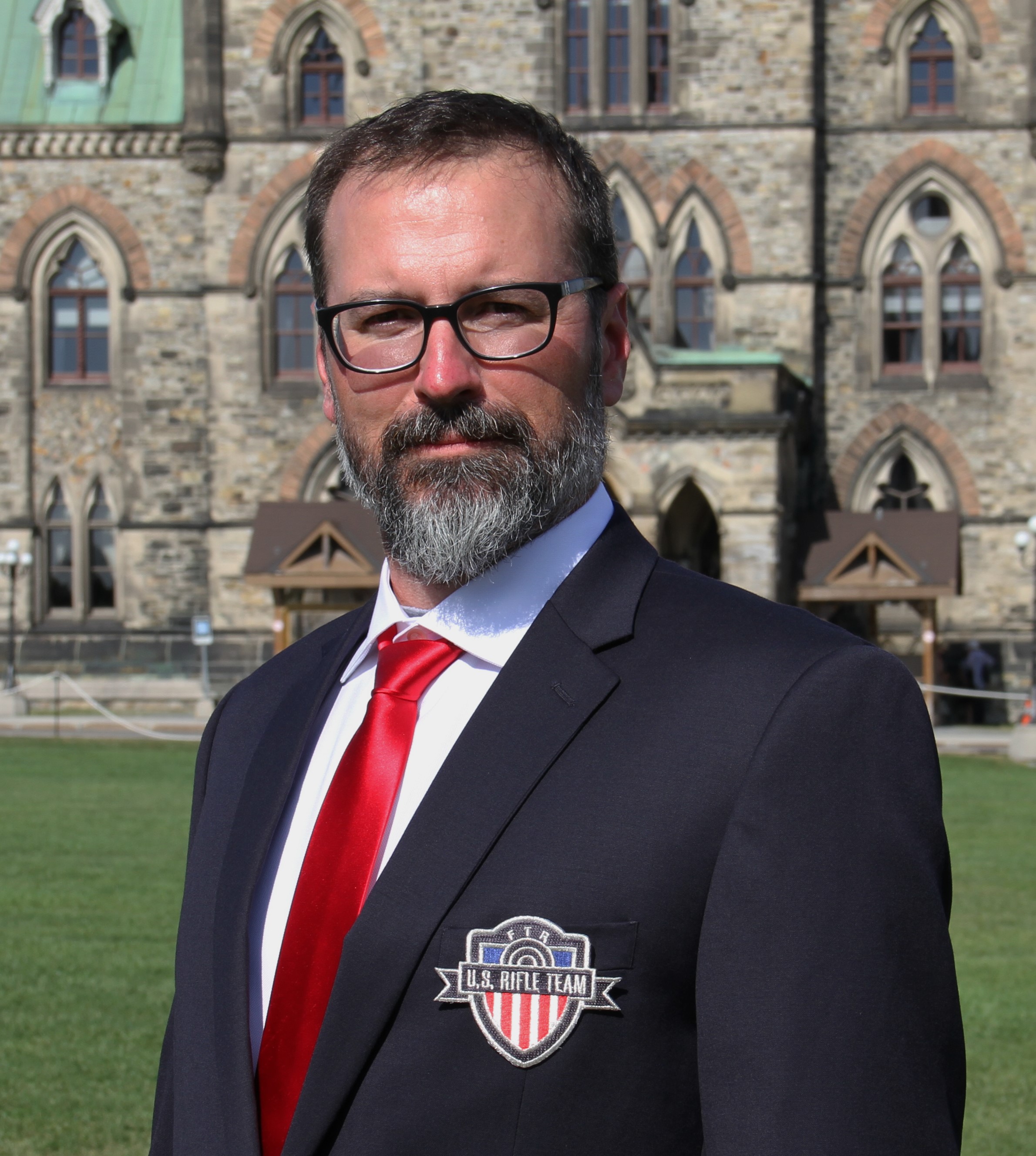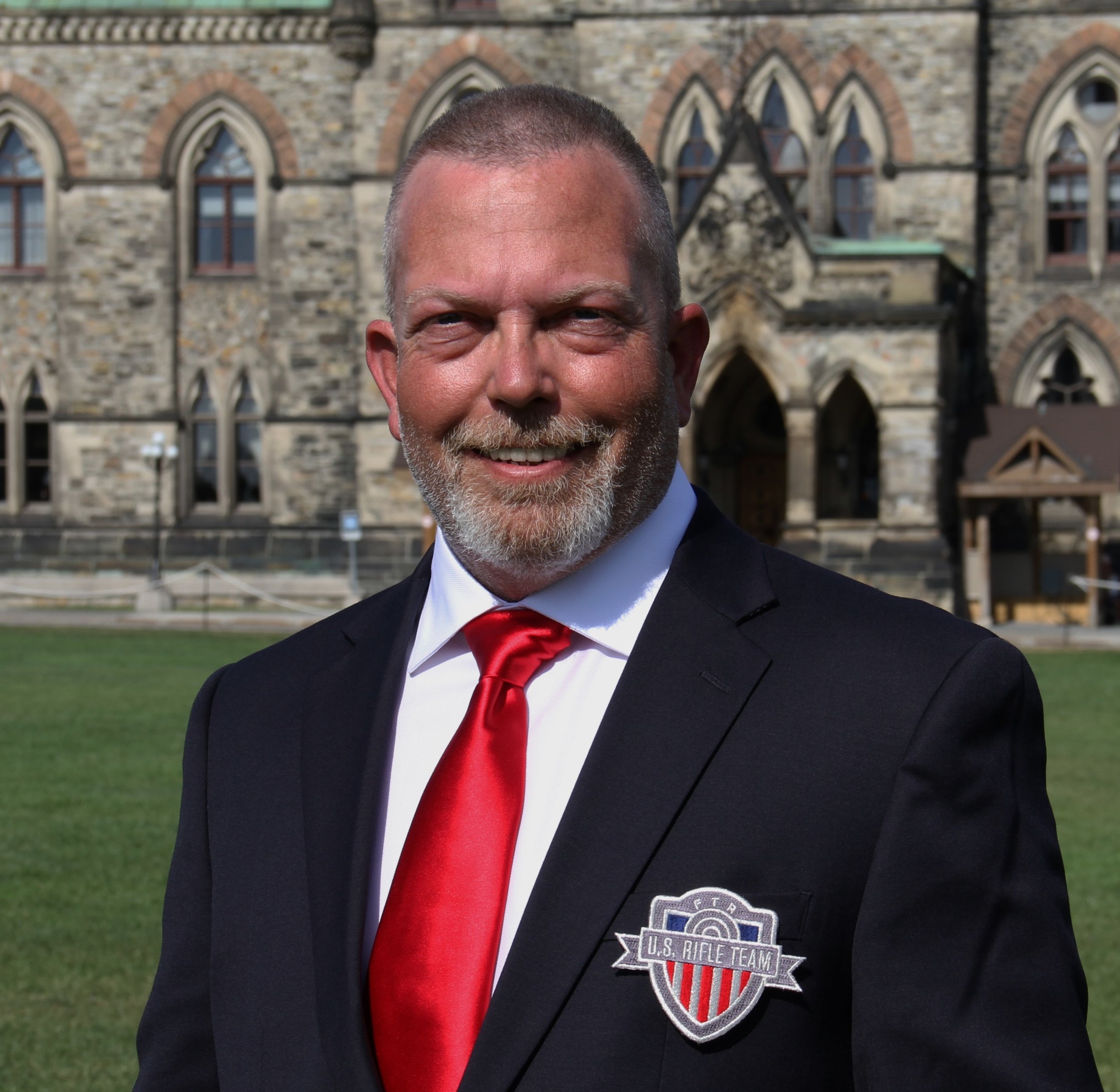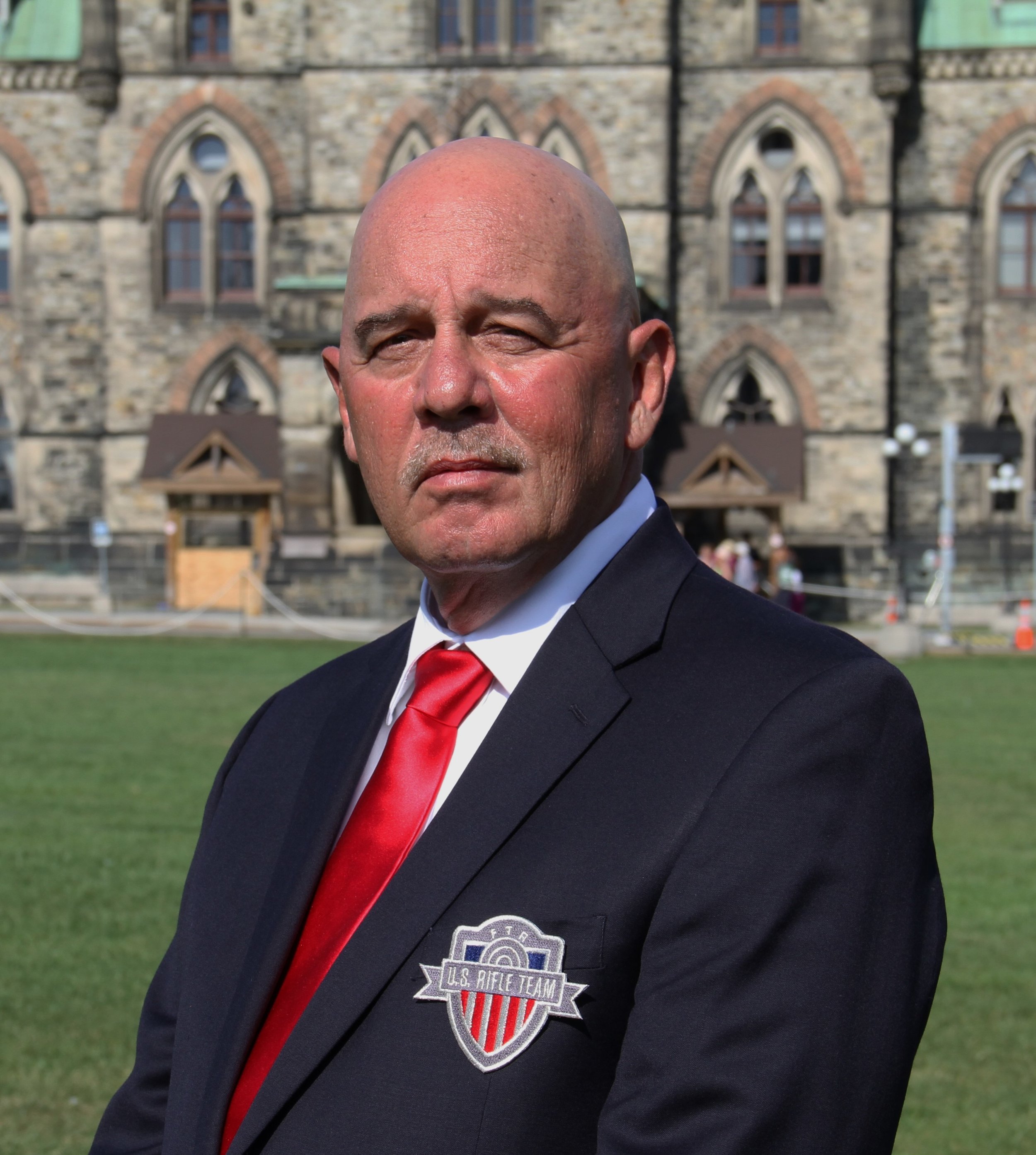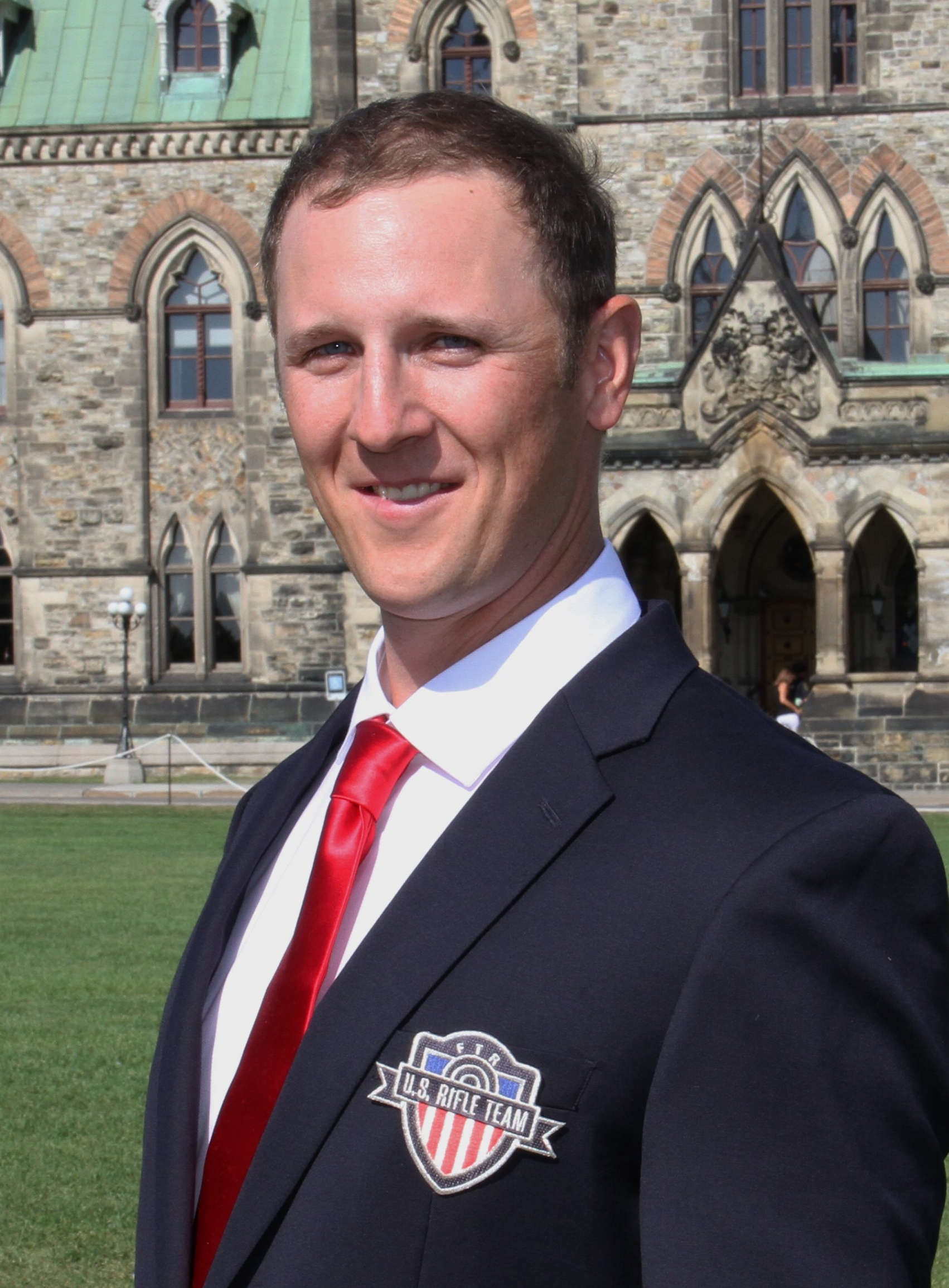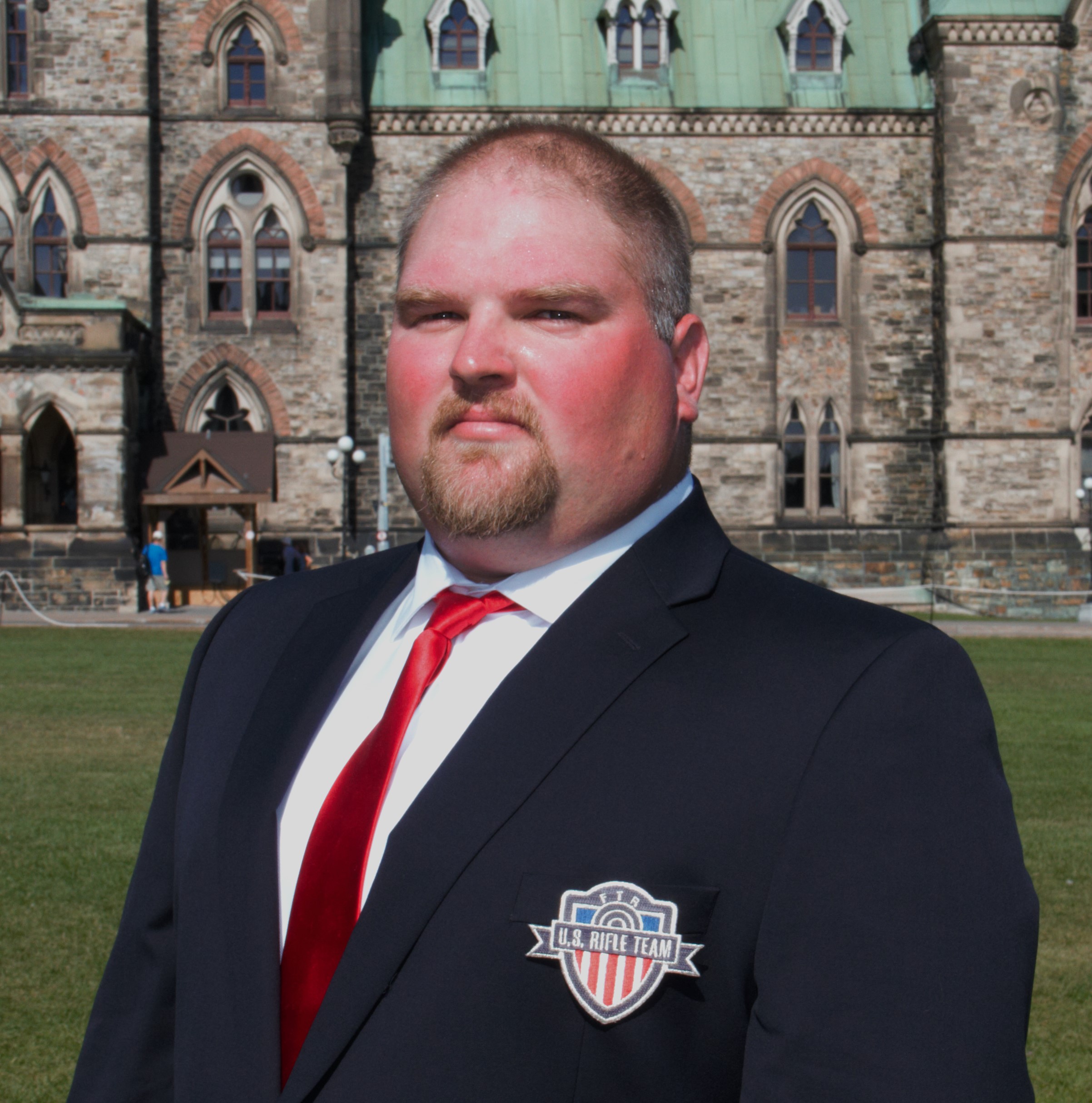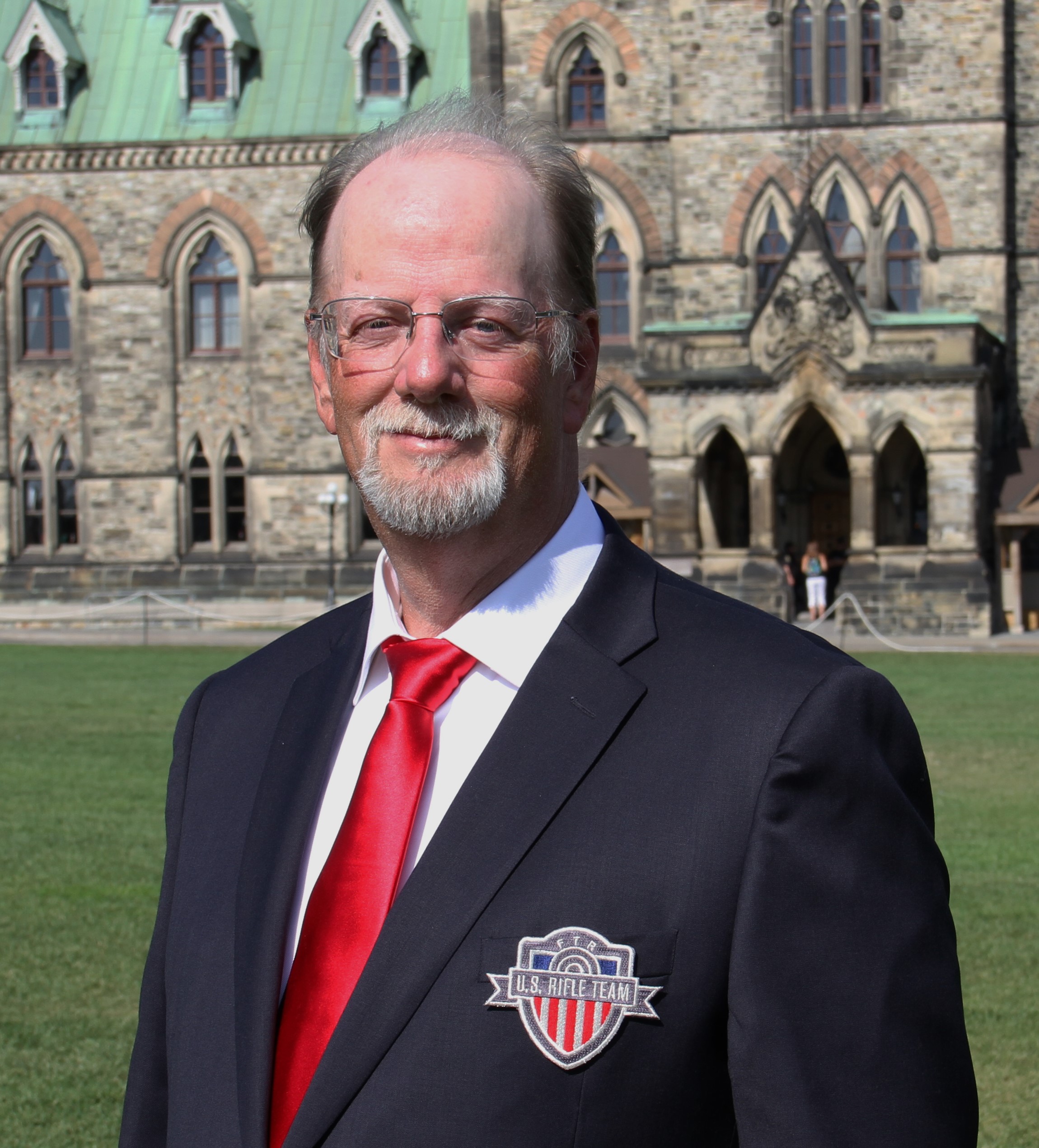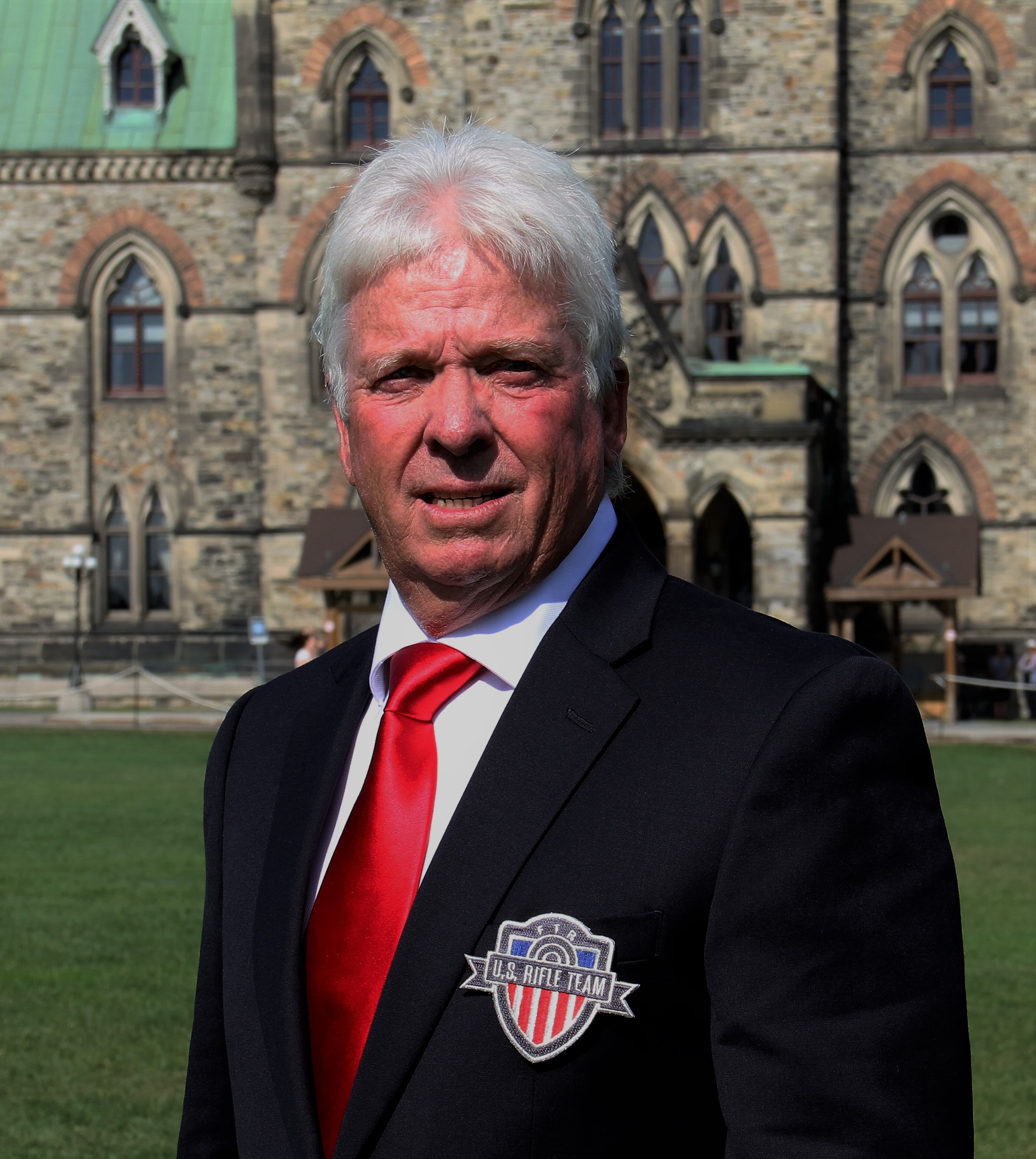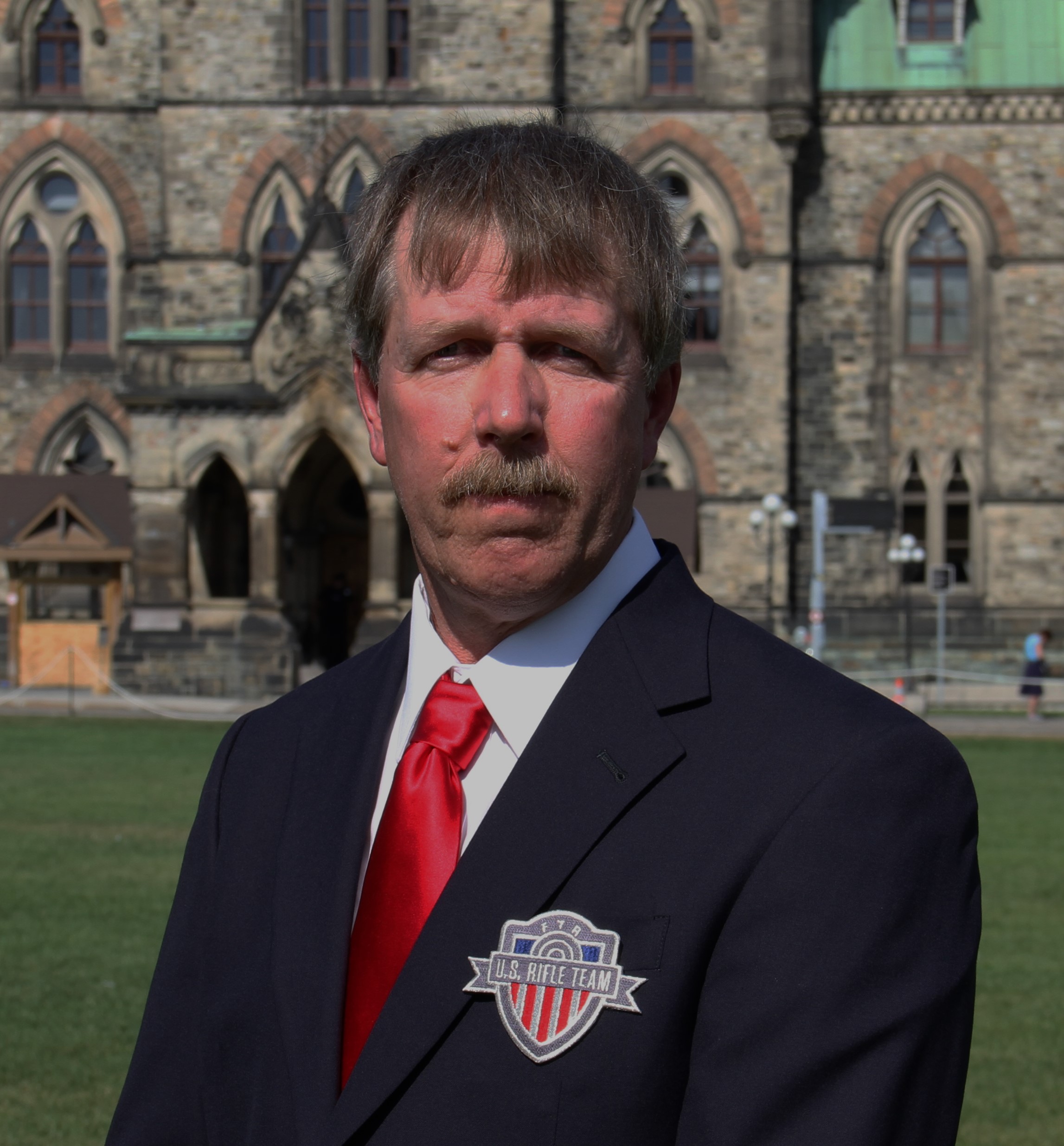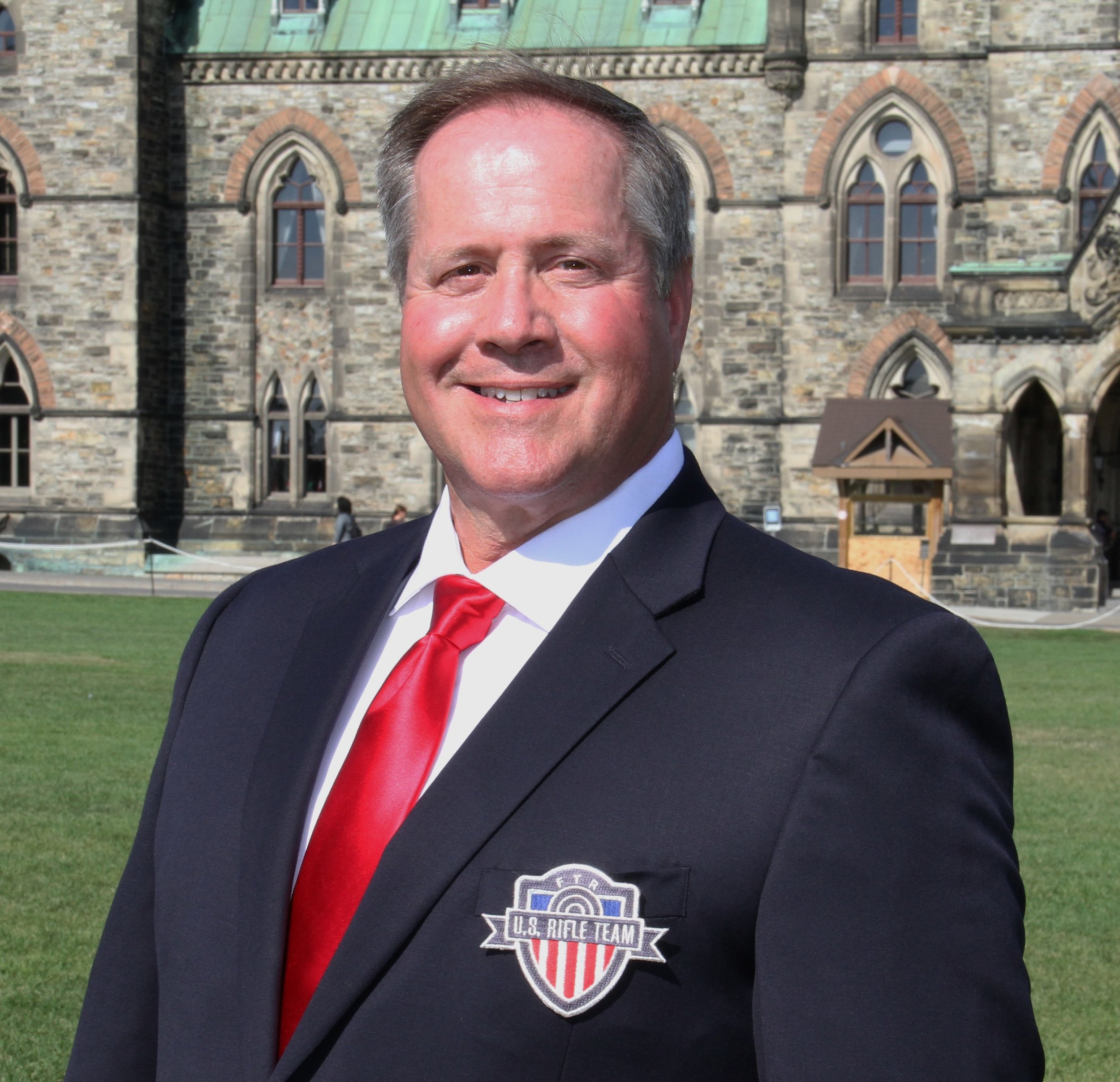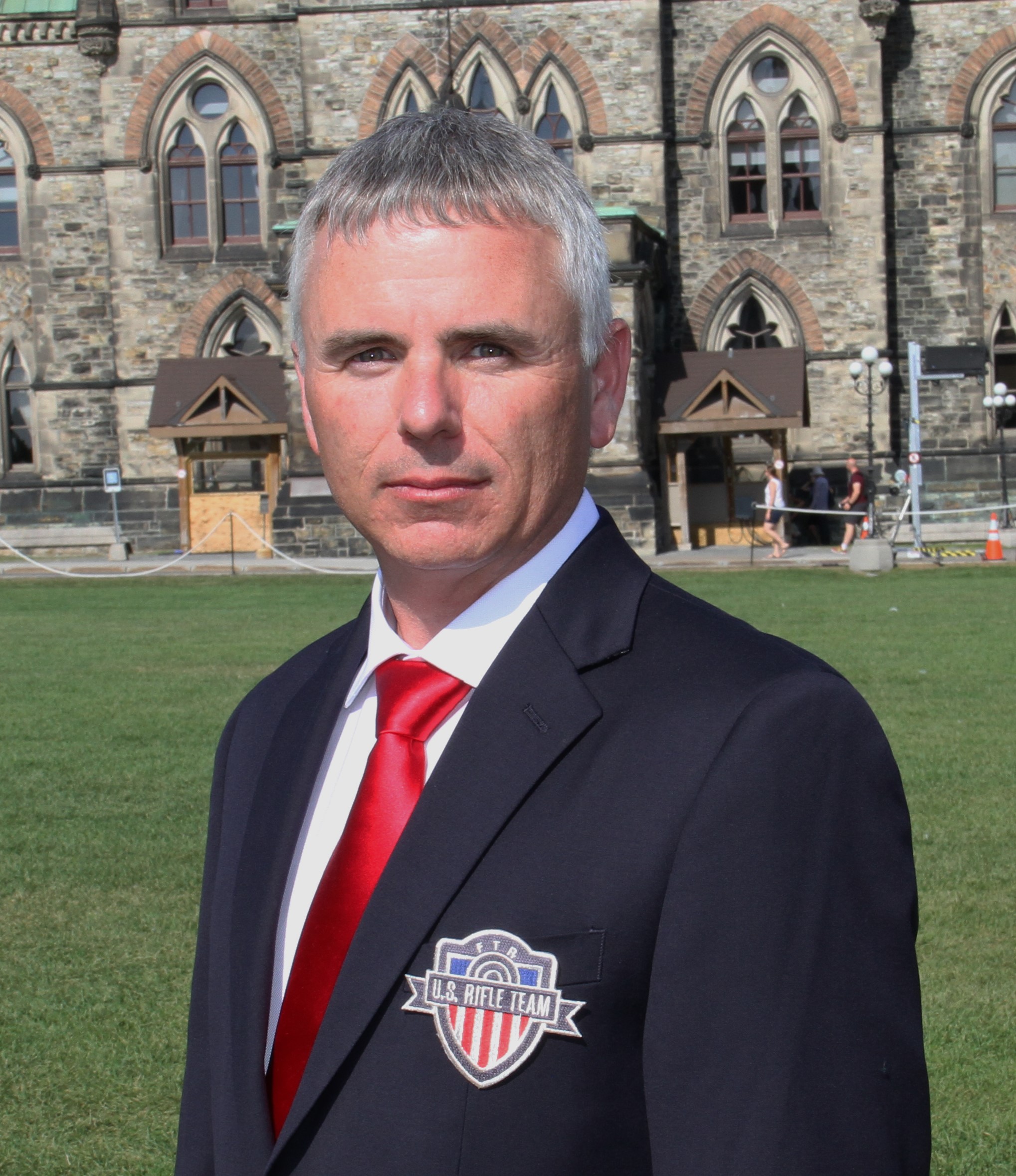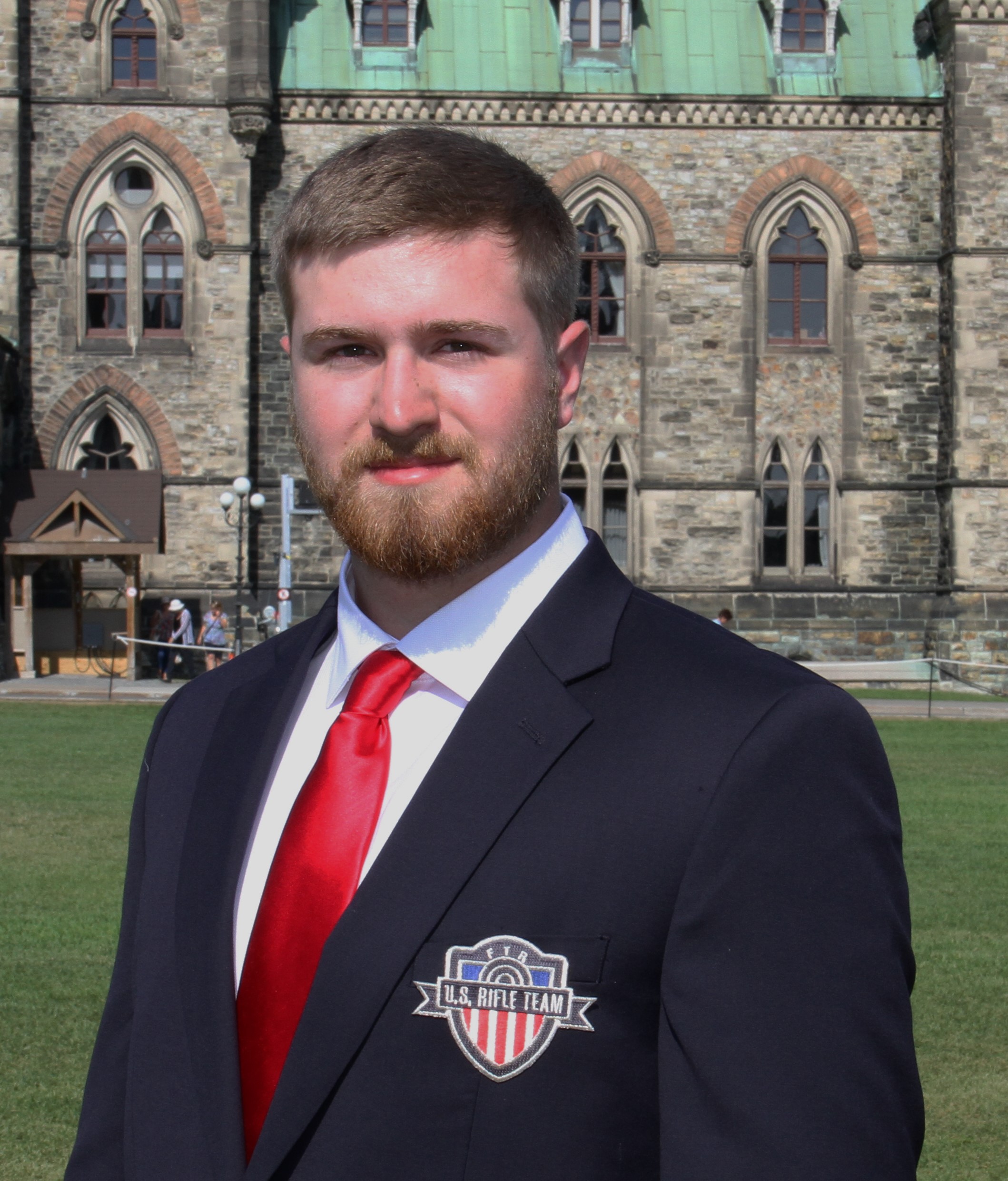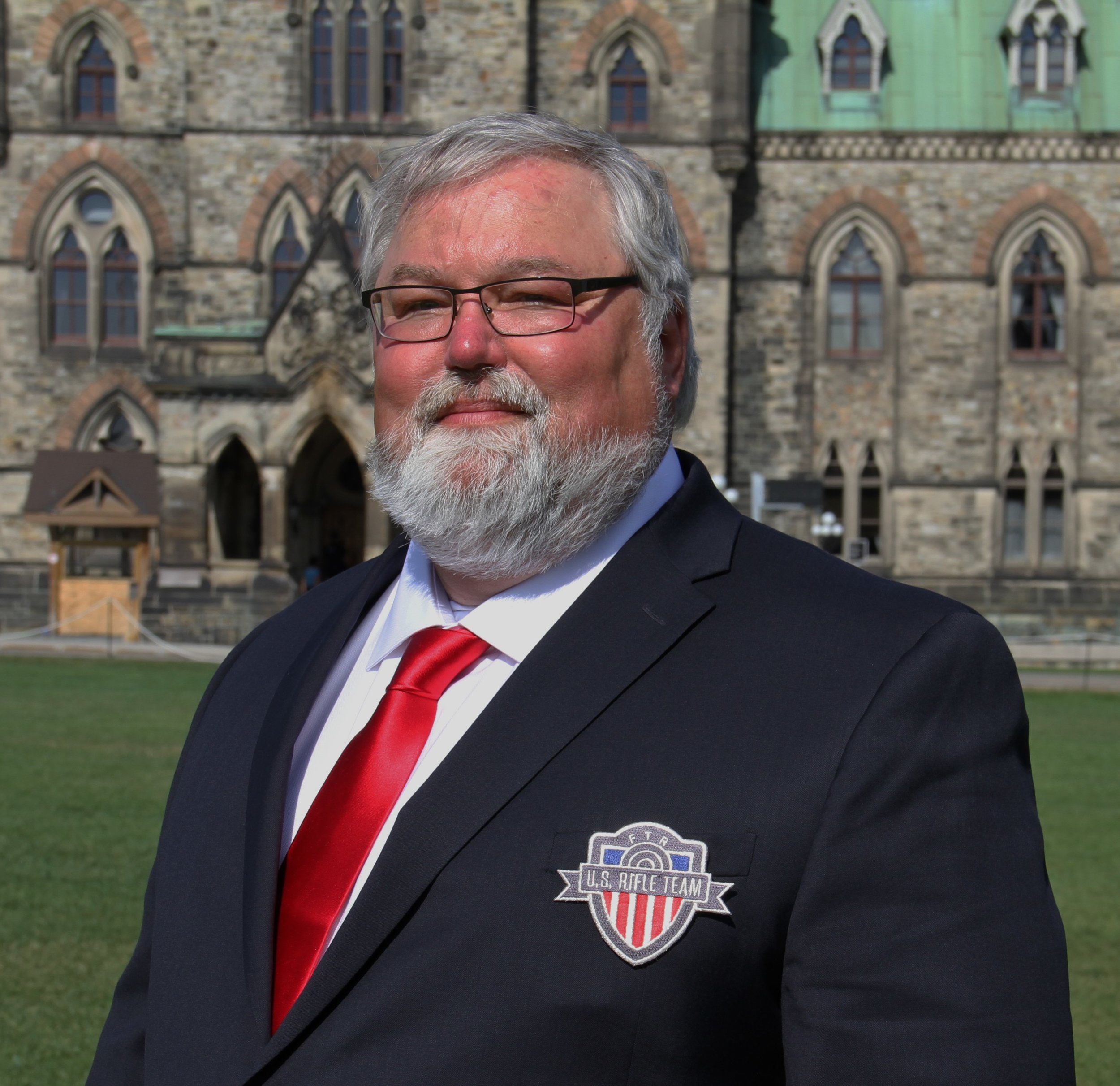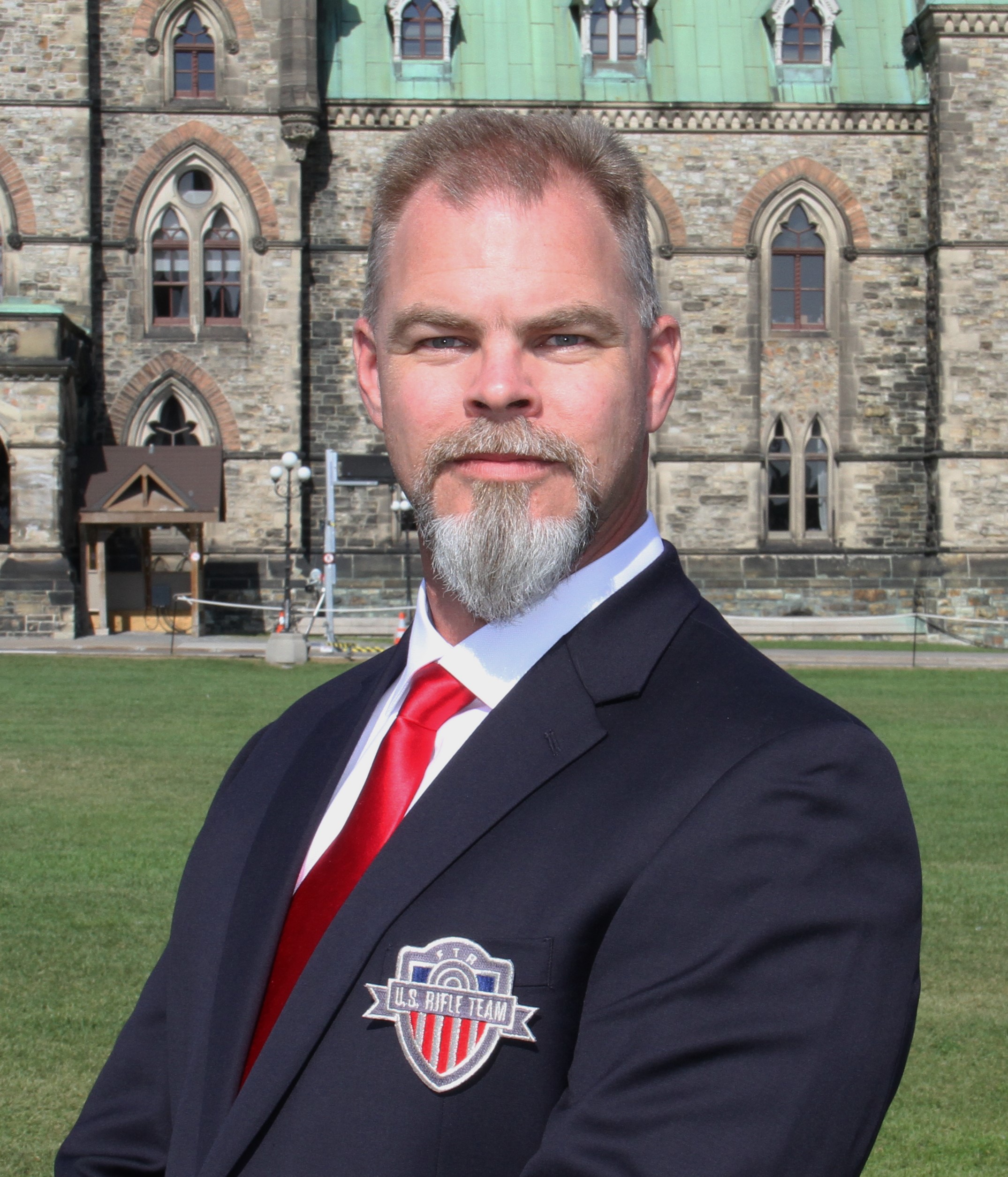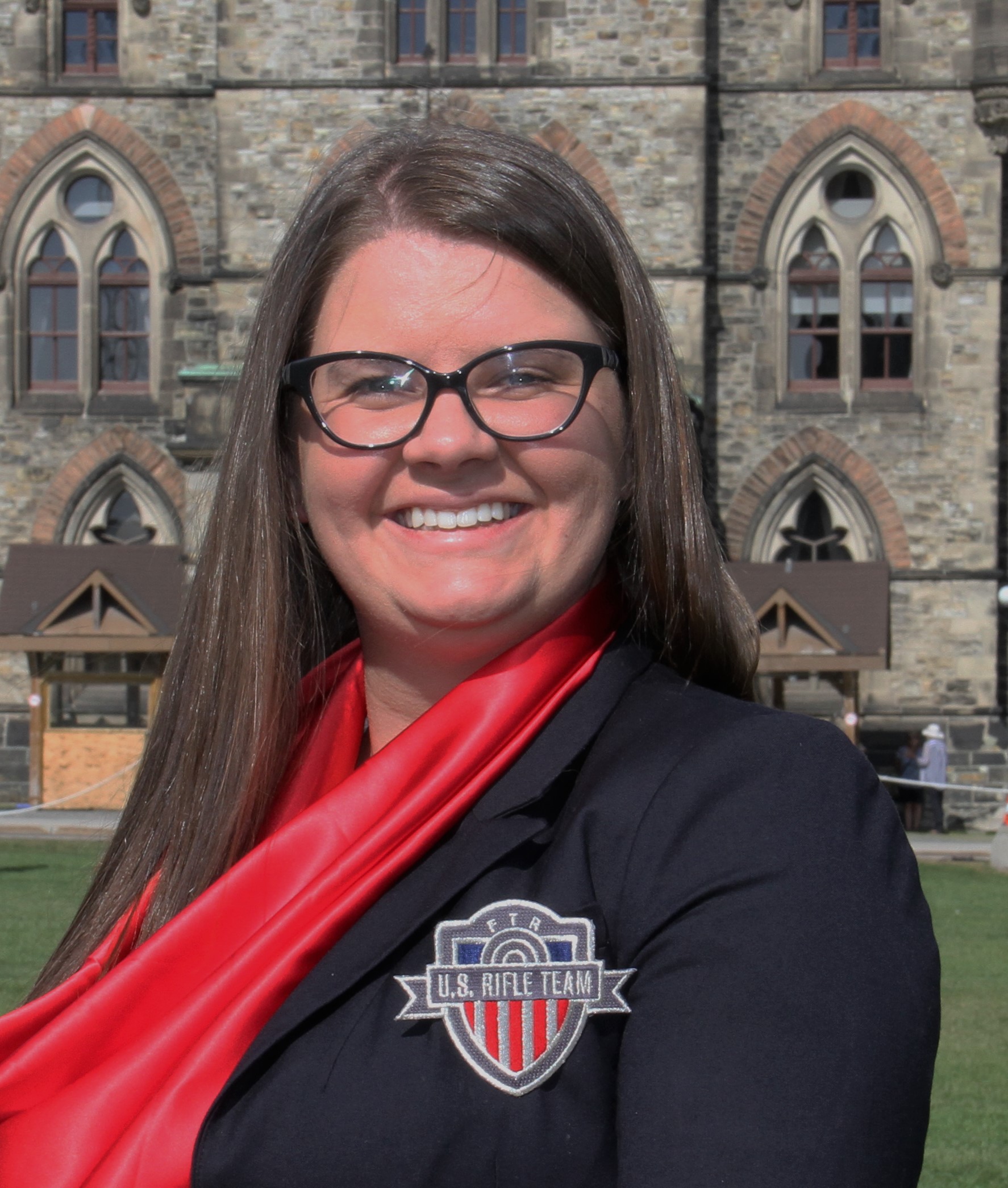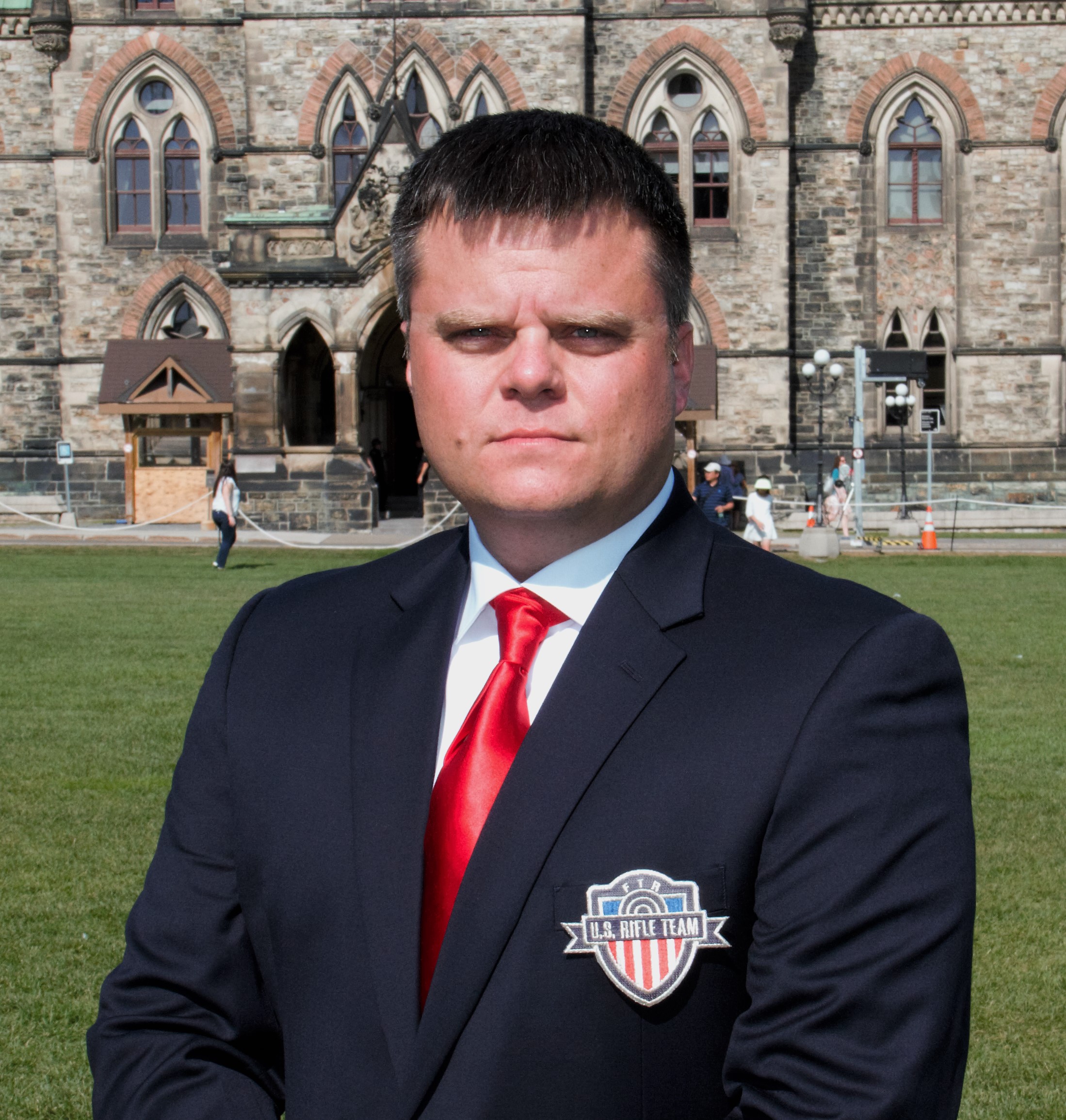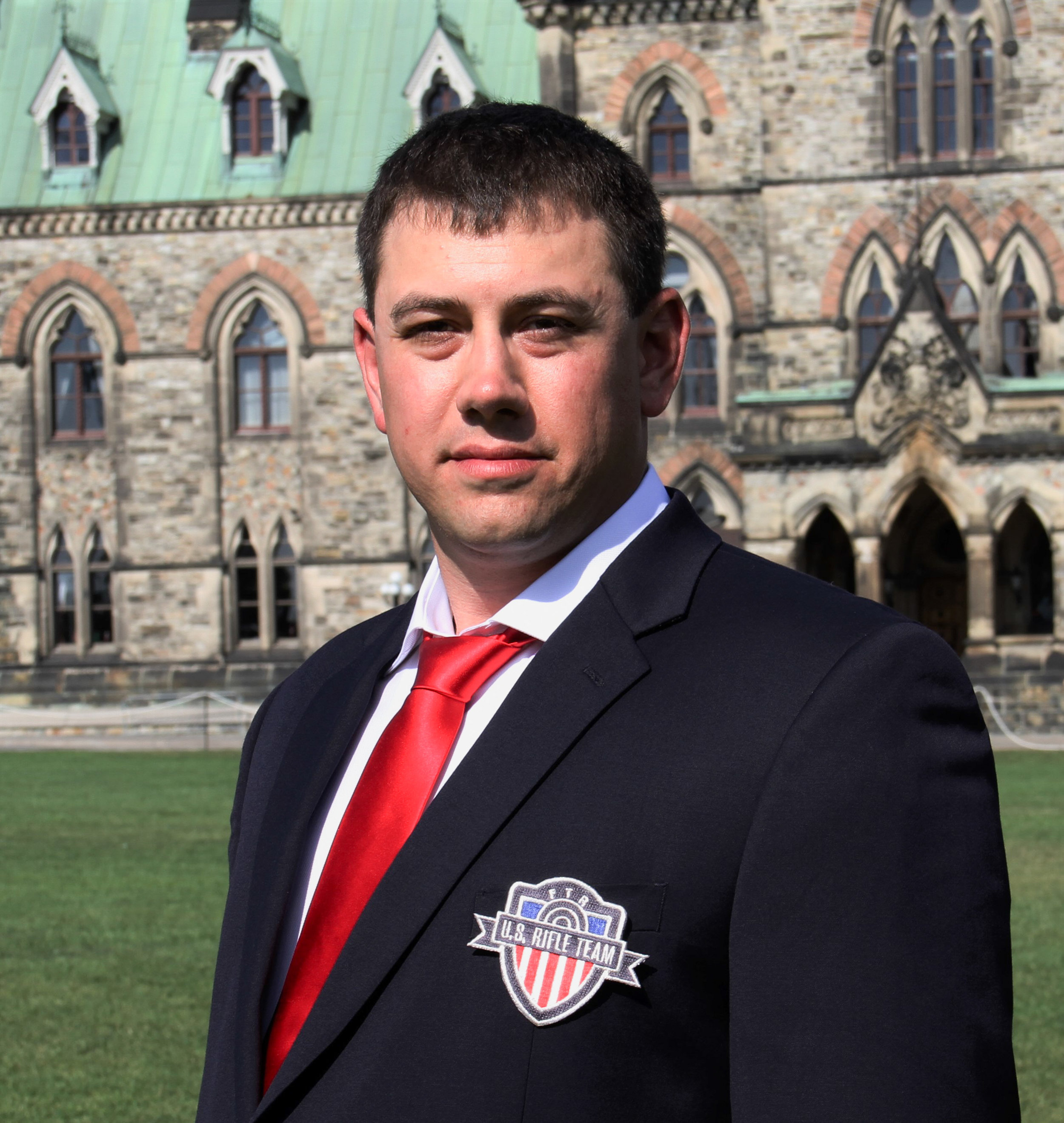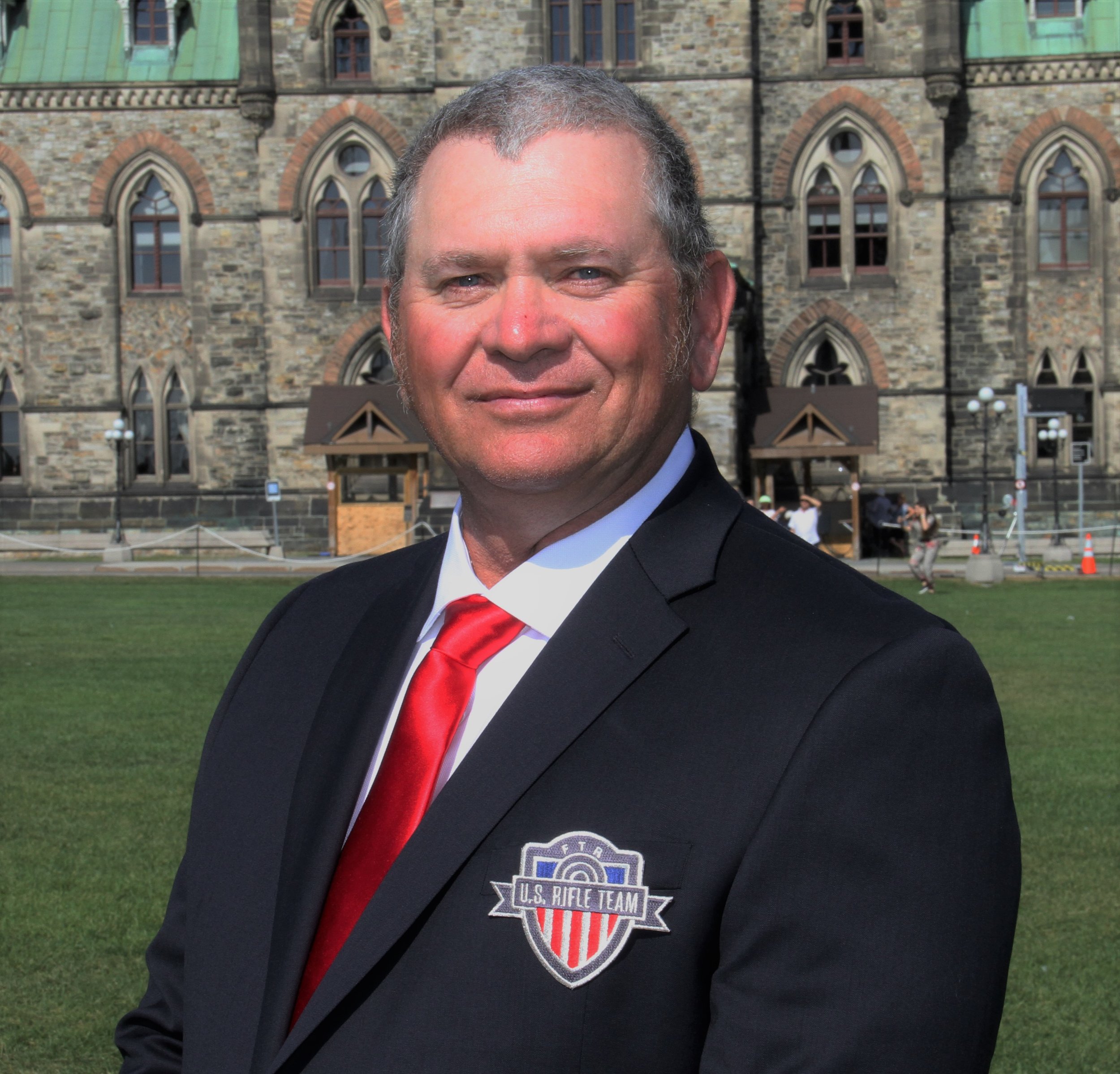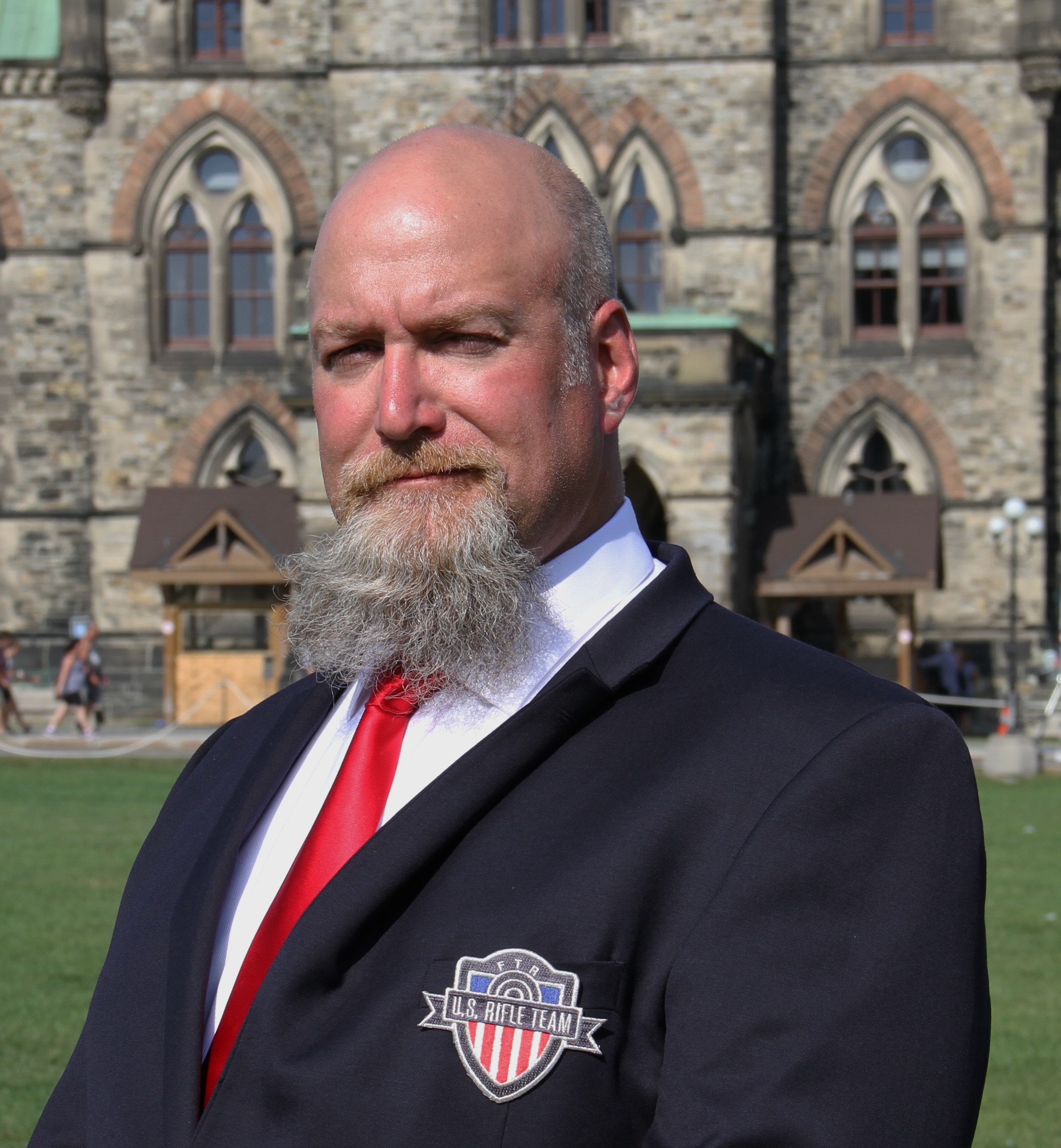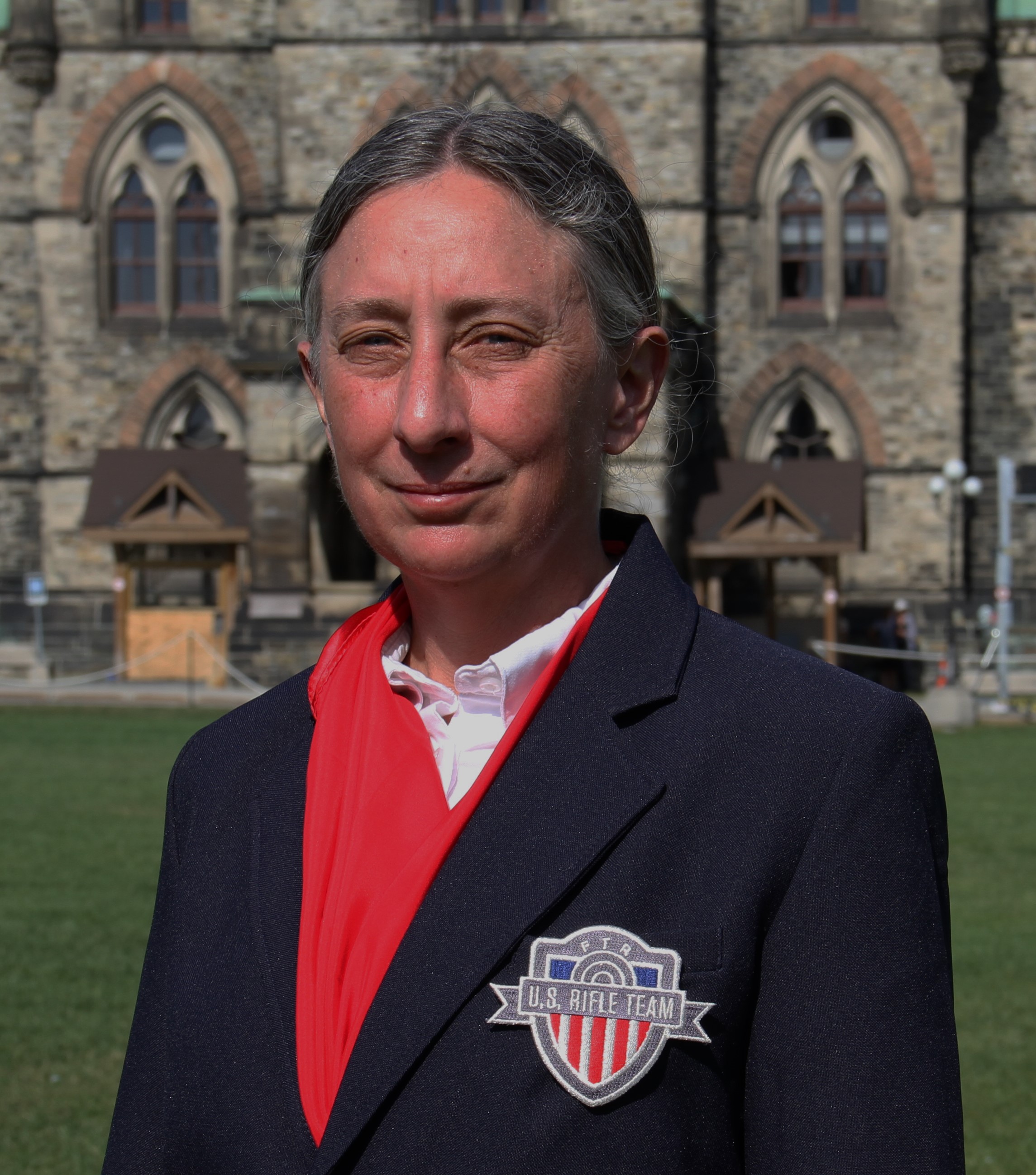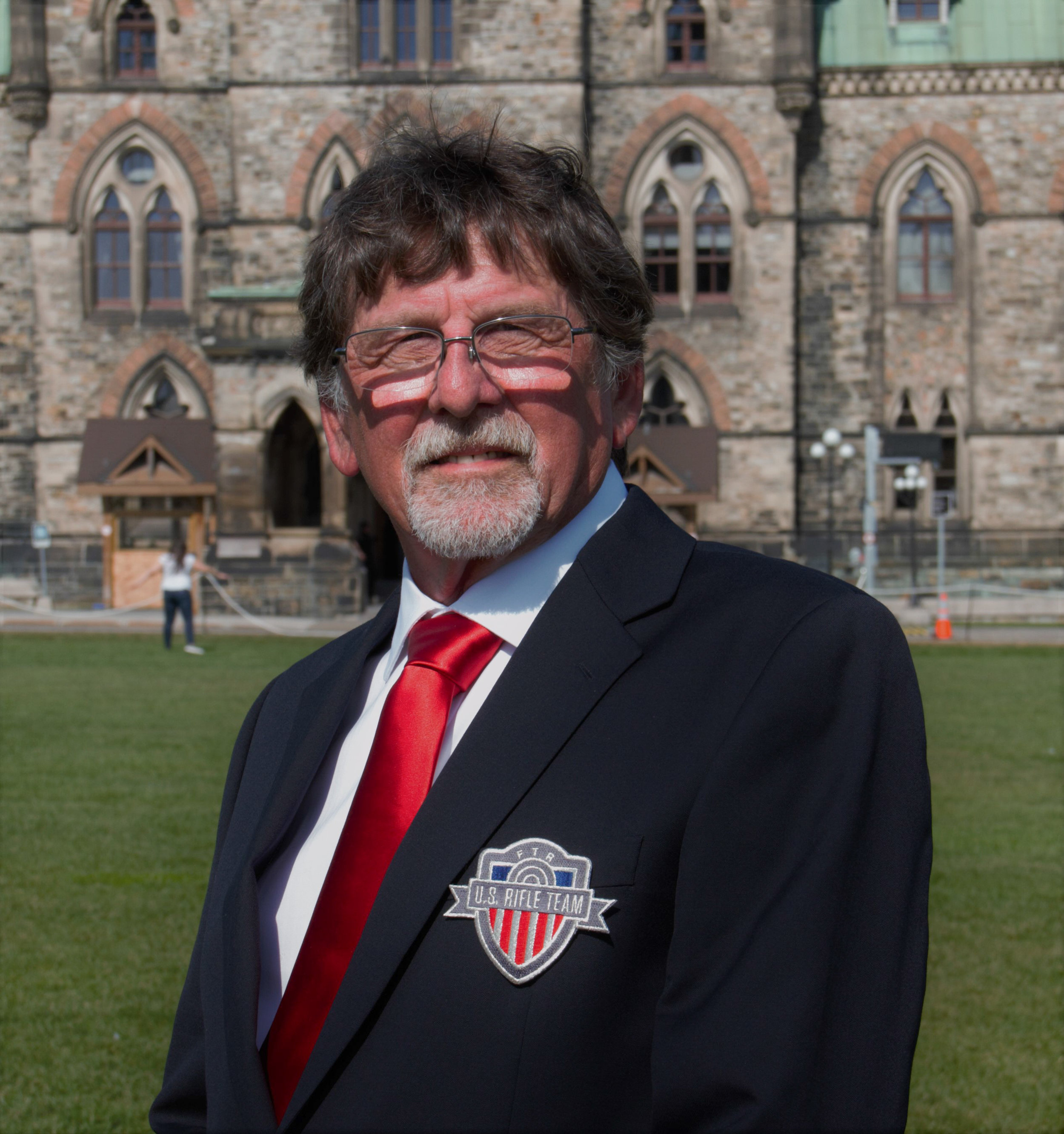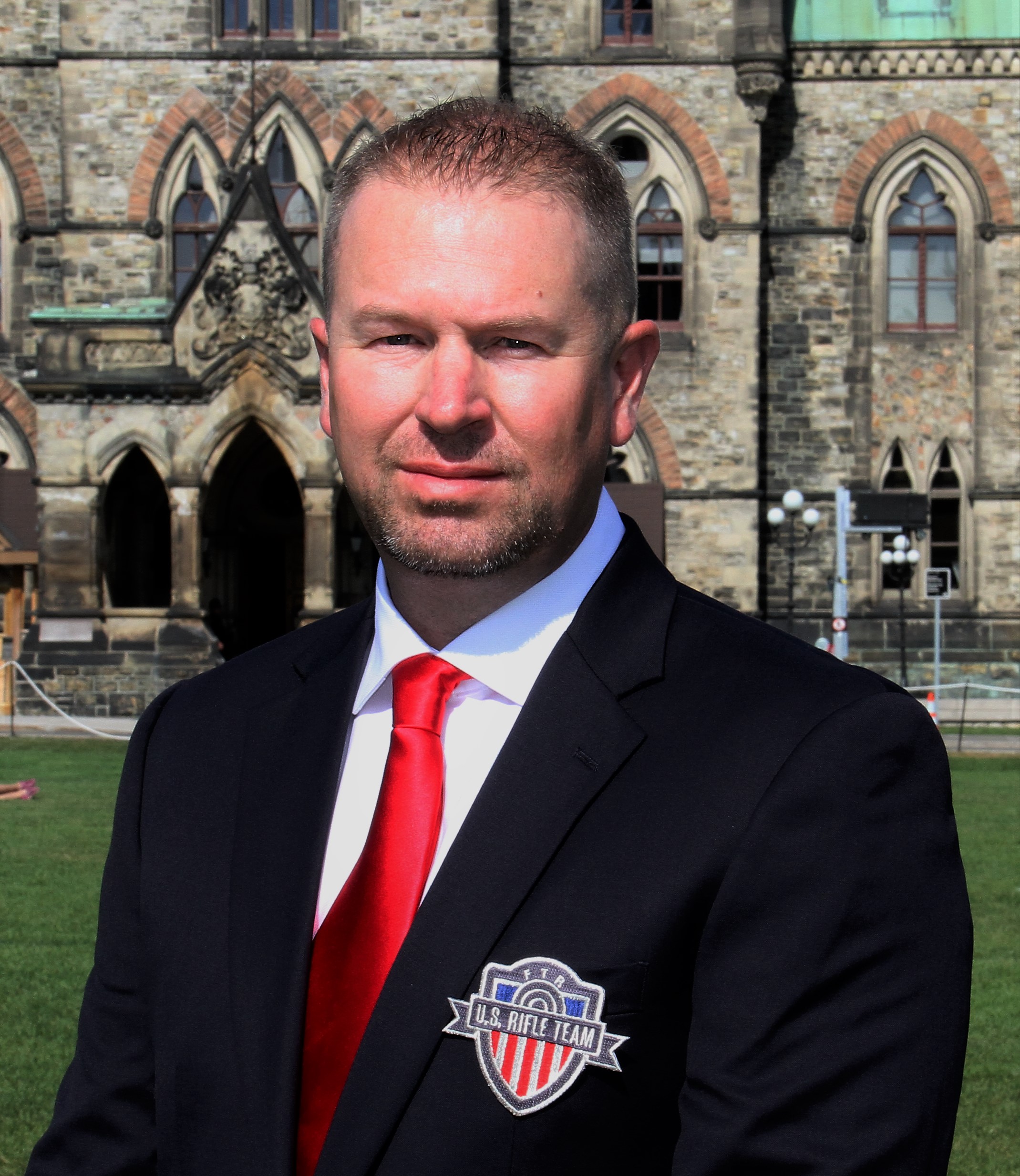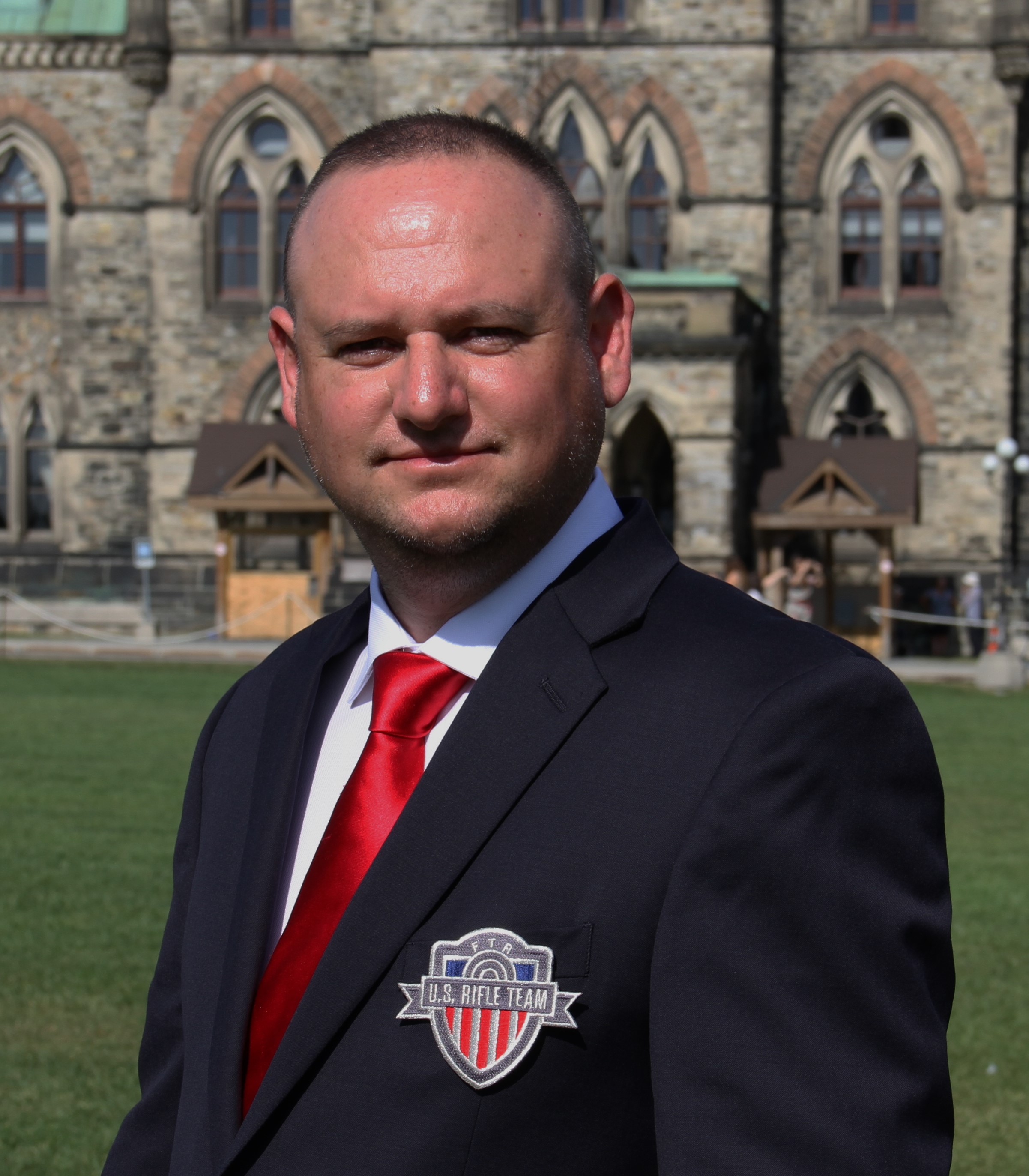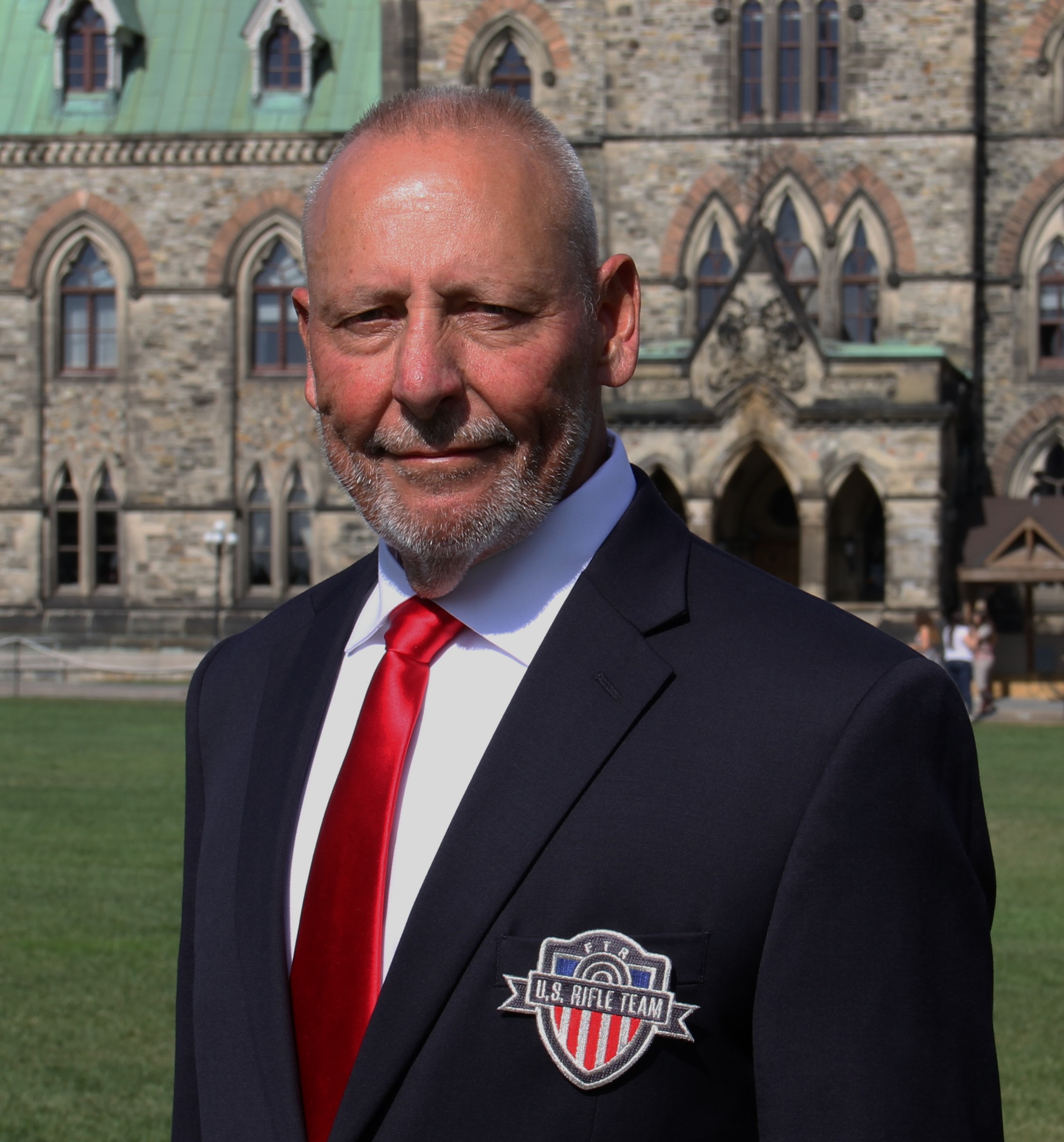We are the three-time, World Champion U.S. Rifle Team and are very proud to represent our Country and our sport. We come from all walks of life and are spread out across the USA.
Our Team competes regularly against teams from other nations. At the 2013 World Championships, seventeen nations were represented. The next World Championships will be held at Connaught Range near Ottawa Canada in 2017.
The World Championships consist of three days of individual shooting and two days of team competition. Our team will compete for the Richardson Trophy against teams from Canada, Great Britain, Australia, South Africa among others.
Most of our team events are fired at targets 1000 yards away. The inner most scoring ring on our target is five inches in diameter. The next ring is ten inches in diameter. If you took the period at the end of this sentence and put it on the tip of your finger and held your arm out, both of those rings would fit inside the period. It is a very high accomplishment for a shooter to keep all of her shots inside those two rings. Never the less, it is quite common for a shooter to keep fifteen or more, out of twenty shots inside those two rings.
The rifles we use are custom made and designed for the sport. A typical rifle may be built using a Kelbly Stolle Panda Action, with a Bartlein barrel, a McMillan Stock and a Nighforce Competition scope. Though there are many other combinations available.
All of the rifles used in the Farquharson Target Rifle class are chambered in either the .308 Winchester or .223 Remington calibers. The reason for that is all of the competitors in our class compete on a relatively level playing field. Every match winner can rightly say that it was their skill, not their caliber, that won the day.
The rifles must also weigh less than 8.25 kilograms and must use either a bipod or a sling as the front support. The bipods are designed for competition and offer greater stability than a typical tactical type bipod.
Competitors generally use handloaded ammunition. This is especially true at the national and international level. Each shooter develops individual preferences for how they load based on their equipment and experience. The sport has trended towards heavier bullets with the very accurate Berger 185 grain Juggernaut and the Berger 200 Hybrid being the most commonly used in the US. However, the individual Silver medalist at the 2013 World Championships was shooting a 155 grain bullet.
The great thing about our sport is that anyone with a .308 or .223 rifle and a bipod can get started and have fun. There are local matches all over the USA. Anyone interested, need only look for an NRA Highpower event and register as an “FTR” competitor.
In fact, this is very close to the way the sport was originally envisioned. A Canadian, named George Farquharson, who was a long time Target Rifle competitor, lobbied the Dominion of Canada Rifle Association to allow competitors to use a bipod and a scope in addition to slings and iron sights to compete. It was a bit of a slow start, beginning in the mid to late 1990’s, but blossomed quickly in the early 2000’s.
Our sport is now divided into two classes, the other being F-Open. F-Open allows many different calibers, heavier rifles and the use of machine type bench rests to guide the rifle. Both classes shoot only from the prone position.
